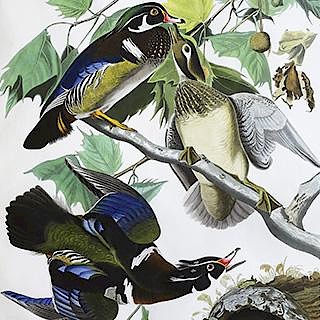George W. Waters, Boating on Lake George, Oil Painting
Lot 103
About Seller
Arader Galleries
1308 Walnut Street
King of Prussia, PA 19406
United States
Arader Galleries proudly celebrates over 40 years in the business of important, antique works on paper, paintings and rare books. W. Graham Arader III began his collection of rare maps, atlases and Americana while an undergraduate at Yale University, and today that passion has grown into one of the ...Read more
Categories
Estimate:
$8,000 - $12,000
Absentee vs Live bid
Two ways to bid:
- Leave a max absentee bid and the platform will bid on your behalf up to your maximum bid during the live auction.
- Bid live during the auction and your bids will be submitted real-time to the auctioneer.
Bid Increments
| Price | Bid Increment |
|---|---|
| $0 | $25 |
| $500 | $50 |
| $1,000 | $100 |
| $2,000 | $250 |
| $5,000 | $500 |
| $10,000 | $1,000 |
| $20,000 | $2,000 |
| $50,000 | $5,000 |
| $100,000 | $10,000 |
| $200,000 | $25,000 |
About Auction
By Arader Galleries
Jan 28, 2017 - Jan 29, 2017
Set Reminder
2017-01-28 13:00:00
2017-01-29 13:00:00
America/New_York
Bidsquare
Bidsquare : Arader Galleries Winter 2017 Auction
https://www.bidsquare.com/auctions/arader/arader-galleries-winter-2017-auction-2063
Arader Galleries loricohen@aradergalleries.com
Arader Galleries loricohen@aradergalleries.com
- Lot Description
Boating on Lake George. George W. Waters (1832-1912). Oil on canvas, 1883. Signed and dated lower right: "G.W. Waters / 83". 18 x 30 inches. Provenance: private collection, Ithaca, New York George W. Waters was born in Coventry, New York, in 1832 and studied art in New York, Dresden, and Munich. Waters is known for his landscapes, many of which he made during trips to the Adirondacks, the White Mountains, and other areas in New Hampshire. He is also known for his portraits, particularly those of Walt Whitman and Joseph Jefferson as “Rip Van Winkle.” He maintained a teaching job as director of the art department at Elmira College in Elmira, New York, from 1869 to 1903, with only brief intervals of travel in 1880 and 1886. He was able to paint in Europe thanks to the aid of wealthy patrons. Boating on Lake George likely depicts a hazy day on the famous Adirondack lake. While the scene cannot be positively identified, it shows all the characteristics of the section of the lake called the Narrows, where mountains rise up from the granite banks of the lake, and many small, densely forested islands appear. The disc of the sun glows through the haze, suffusing the sky with warmth and glowing in the lake below. Waters’ broad, smooth paint handling was suited to this light effect, and brings an appealing calm to the image, while the scale of the tiny figure rowing a boat in relation to the surrounding mountains suggests the power and majesty of the site. Waters was a member of the Salmagundi Club, Century Association, and the Amateur Art Association, New York. He exhibited his work at the National Academy of Design, Pennsylvania Academy of the Fine Arts, Boston Art Club, Black and White Exhibitions of the Salmagundi Sketch Club, and in Buffalo, New York; Kansas City, Missouri; Detroit, Michigan; and Denver, Colorado. His work is housed in the Western Reserve Historical Society, Cleveland; and the Arnot Art Museum in Elmira, New York.
- Shipping Info
-
Shipping Terms:Packing and handling of purchased lots by us or by someone else is at the entire risk of the purchaser. Purchasers are responsible for all packing and shipping costs.
We are not responsible for the acts or omissions of carriers or packers of purchased lots whether or not recommended by us.
-
- Buyer's Premium



 EUR
EUR CAD
CAD AUD
AUD GBP
GBP MXN
MXN HKD
HKD CNY
CNY MYR
MYR SEK
SEK SGD
SGD CHF
CHF THB
THB




